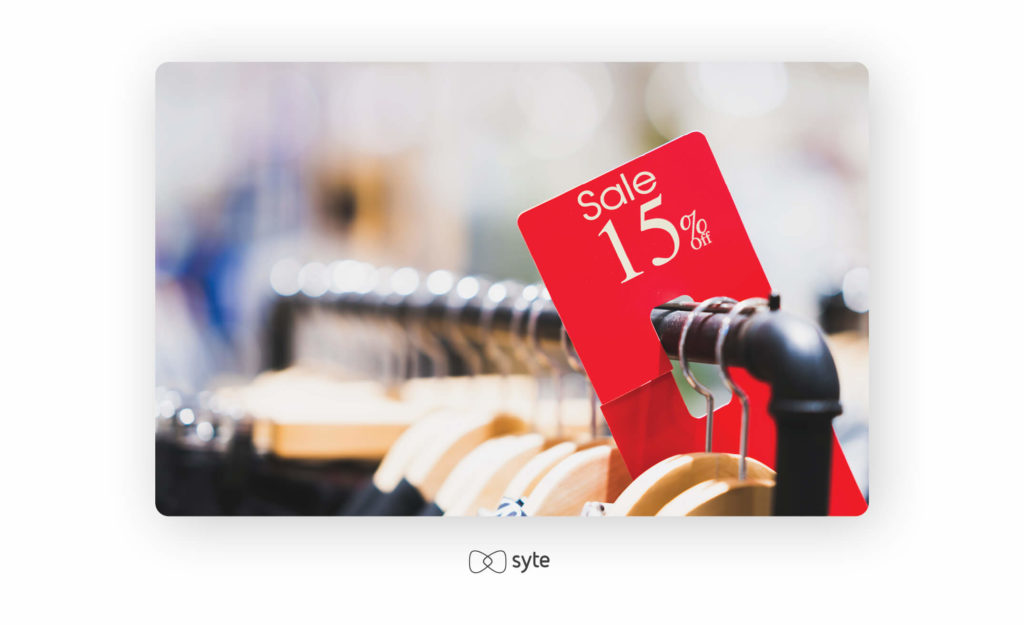The world may still be in summer mode, but for eCommerce merchants, Black Friday and Cyber Monday (BFCM) are just around the corner. Now’s the time to start preparing to capture the crowds that will be heading online to take advantage of sales and promotions. This entails everything from researching shopping behavior and checking the competition to optimizing your website and creating contingency plans for logistics and fulfillment. We’ve already covered what it takes to increase the visibility of your brand and products during BFCM. In this article, we’ll tackle what many are experiencing as a symptom of recent global supply issues: excess inventory.
Managing your inventory is crucial for large-scale shopping seasons like BFCM. Typical concerns involve unexpected surges or falls in demand, selling out of products, and delayed shipments. Recent problems in the supply chain worldwide have led brands and retailers to stock up — leading to excess. Many became over-inventoried after a volatile retail market caused a downturn in orders, leading to slow movement of stocks, extra storage costs, and loss of revenue.
Surplus stock problems are not easy or straightforward, but we’re here to offer you tips on reducing the negative effects. In this article, we’ll discuss what you can do to address overstock before, during, and after seasonal sales. With our guide, you can also have a better handle on your inventory for a successful BFCM and a strong end to the financial year.

BFCM: The Numbers
The new decade has proved to be atypical for retail. Economic uncertainties during the pandemic led to supply chain issues, causing shipping delays and product shortages. That caused demand for many items to soar, prompting brands and retailers to augment their inventories. BFCM 2020 actually saw an increase of 71% in eCommerce shipments, compared to pre-pandemic numbers.
The Downturn in Customer Demand
The forecast for 2021, however, was less optimistic at 66%. According to last year’s CNBC/Momentive Small Business Survey, 52% of Americans had no intention of shopping during BFCM. 59% of respondents weren’t excited about the retail holiday. Consumers were concerned about rising prices brought about by inflation and depleted stocks. Around 43% of US shoppers worried they wouldn’t get what they wanted during the shopping season.
Consumer Motivations and Behavior
Meanwhile, the trend of shopping earlier continued, with many retailers posting early-bird holiday deals. According to the National Retail Federation (NRF), 61% have begun to browse as early as the first week of November, and 28% have completed their shopping by then. Deloitte found that seven in 10 customers have started to shop before the end of October to prevent stockouts. But if brands don’t replace stock immediately and customers can’t find what they want, 60% said they would look elsewhere.
According to Statista, attractive promotional offers were the primary drivers for global customers during BFCM. Deloitte found, however, that five out of 10 retail executives expected an increase in prices. The same survey has shown that 70% of consumers also anticipated rising costs. As a result, the average holiday budget has increased, but lower-income shoppers are opting not to buy.
Meanwhile, the NRF found that 108 million planned to shop on Black Friday, and 62.8 million on Cyber Monday. Shoppers are returning to physical stores across the board: 64% said they were more likely to do so during Black Friday.
Millennials were the top online shoppers for last year’s Black Friday, with almost 45% purchasing digitally, followed by Gen X at 38.9%. On the other hand, Gen Z and Baby Boomers preferred to spend their dollars at brick-and-mortar stores, with only 28.3% of Gen Z and 30% of Baby Boomers buying online.

Inventory Management and BFCM
Inventory management is a key part of BFCM preparations. In this market, you need to guarantee that your shoppers can get what they want when they want it. But with current supply conditions, overstock is now more of a concern. Amidst inflation and supply chain issues, more customers are being swayed by a superior experience, rather than preferences in brands or price considerations. In such cases, managing stock remains crucial.
What is Inventory Management?
Inventory management refers to the process of sourcing, keeping, and moving stock. It encompasses everything from monitoring inventory, reordering, and production to accounting, order fulfillment, and demand forecasting.
By managing inventory, brands and retailers can have the right products in the appropriate amounts and with reasonable pricing. The cost of holding inventory should be as minimal as possible. This means there’s a steady supply of products that move through the chain — ideally, no low stock or surplus. In a well-managed inventory system, brands are alerted when raw materials need to be replenished for production. The number of items available for purchase can also be controlled.
How Important are Product Tags in Inventory Management
Robust product tagging is the backbone of your eCommerce site. It is crucial in backend operations as well as user-facing customer experiences. Accurate, consistent, and updated product tags are especially helpful in improving the visibility of SKUs via relevant search results and recommendations.
Not all ways of tagging products ease work, though. Manual product tagging and other limited approaches make inventory management arduous and endless. On the other hand, automatic tagging, especially if it’s powered by visual AI, analyzes items down to minute visual details. As such, the product metadata is exhaustive, with important product information that includes not only titles, brand, and prices, but also descriptive attributes like styles, prints, and more. This rich product data enables inventory management to be more efficient and effective.
AI-powered product tags are also integral in forecasting demand, which in turn informs inventory management. The data gives brands and retailers an idea of what’s driving sales and which particular attributes are popular. As a result, brands can order more fast-selling items and phase out items that are not as high performing. Managing merchandise and addressing issues such as overstock eventually become easier.
Why It Matters
Strong inventory management is a critical key to the success of your business in this upcoming BFCM. To stay competitive, your brand must deliver products when customers need them. Here are more of the benefits of having effective inventory management:
- It minimizes inventory costs. Storing products costs you money until they sell. Inventory management ensures you’re not overspending to maintain products and materials that aren’t big sellers.
- It prevents dead stock. When you have unwanted inventory, it ends up as a loss of revenue for your business. The products are also at risk of theft or damage the longer they are kept in your warehouse.
- It improves cash flow management. Managing your inventory ensures that you procure or manufacture enough products that will sell. This will dictate how your business is performing financially. You can also know which SKUs to replenish to ensure that orders continue to come in.
- It optimizes order fulfillment. You can decide where to distribute your inventory depending on the performance of certain products. In doing so, you can deliver a better customer experience by shortening the delivery time and reducing shipping costs. This also impacts how smooth product returns would be, and how soon returned items can be available again.
- It optimizes the customer experience. Inventory management, coupled with the right product discovery tools such as recommendation engines, ensures that products are surfaced and sent to shoppers as soon as they want them. Stockout leads to customer dissatisfaction — at least 30% of consumers feel that stockouts negatively impact their experience. Meanwhile, 69% will only choose a substitute after their first encounter with a sold-out product, and 70% will go to a competitor after three instances of stockouts.

How Excess Inventory Impacts Brands and Retailers
Online store inventory management strives to create a balance in your stocks. This means not having so little that you can’t meet demand and not having so much that it becomes difficult for you to sell everything. This ideal scenario is rarely the case now, with brands reluctant to let go of supplies due to a decrease in global demand.
What is Excess Inventory?
Excess inventory could refer to a variety of situations. Say you have an item that’s kept in amounts that exceed their predicted demand and is slow-moving. Or you could have inventory that has depreciated or turned obsolete and won’t sell in the future. Excess inventory also covers products at the end of their life cycle that may have sustained damages and are deemed unfit for sale.
Excess inventory is distinct from safety stock, which pertains to additional stock ordered in anticipation of growing demand, stockouts, and shipment delays.
Carrying excess inventory has serious implications for your business. It ties up capital and adds to expenses. It’s also a symptom of inventory mismanagement, which can be caused by different situations, including unpredictable consumer demand, erroneous predictions, and delayed delivery of items.
What Leads to Dead Stocks
Overstock could be a result of a host of different reasons. Here is a sampling:
- Failure to account for seasonal buying
Most industries are impacted by seasonal demand. When seasonal variations are disregarded, brands and retailers will be unprepared to meet consumer demand and unable to price products appropriately. Not considering this can lead to a build-up of inventory that won’t be sold until the following year or at a discount. This could also lead to stock that eventually has to be written off.
- Inability to clear out slow-moving inventory
Sometimes, excess stock just can’t be avoided, but it doesn’t have to get out of control. When it happens, it’s important to address it immediately to prevent full depreciation. Obsolete inventory costs brands more in the long run. Keep reading for more ways to address slow-moving inventory.
- Inaccurate or inadequate methods of demand forecasting
Poor demand forecasting can cause retailers to overstock (as well as understock). When your inventory management strategies and tools are limited, they could be unable to handle the nuances of the market. They could also fail to consider several factors that influence demand. Without accurate predictions, you always risk losing profit, be it through products losing value or demands being unmet.
- Inventory reaching the end of the product life cycle
The demand for a product depends on how far along it is in the life cycle. Newly launched products eventually mature and then go into decline. While demand is at its highest during product maturity, inconsistent demand and stagnation might signal an impending decline in popularity. Failing to sell items when they are at their peak of popularity can lead to excess inventory.
Supply chain issues during the pandemic have led many companies to overbuy because they want to assure customers of high levels of availability. However, when demand eventually declines, many can’t sell their stock. The situation is one example where businesses try to overcompensate because of the uncertainties in the market. Another is getting products at a bargain. When deals are too good to pass up, brands could fill their warehouses with stocks that are not necessarily in demand.
Inconsistencies in the supply chain also lead to overstock. Retailers can base purchasing decisions on data, but they can’t control suppliers and manufacturers. When issues arise that affect the delivery of orders, their lead time could be lengthened. Businesses often mitigate the risk brought about by the unpredictability of the supply chain and unreliable suppliers by ordering more to address future demand.
- Poor inventory management system
Many factors contribute to online store inventory management, including ordering, purchasing, tracking, and selling. When the process is not streamlined, it can cause miscalculations in ordering and misses in inventory tracking. Brands could also suffer from poor coordination with suppliers, manufacturers, and customers.
Marketing efforts don’t always pay off. Shoppers will not be compelled to buy from you when a campaign fails to connect. Deciding on stock availability based on the popularity of your ads or campaigns can lead to immovable inventory. Historical data on consumer demand and sales are better considerations in building your inventory.
The Drawbacks to Excess Inventory
Overstocking isn’t great for brands and retailers because it can cause serious problems that deplete time and resources, such as the following:
- Cash flow will be tied up
When money comes in the form of unsold goods, it limits company cash that could be used elsewhere. In other words, profits from merchandise help sustain business operations.
Keeping slow-moving inventory is costly as you’re paying for storage space without getting a return on your investment. And that’s not counting paid employees, utility bills, insurance, taxes, and other expenses. Surplus also takes up space in your warehouse that could be for more profitable items.
The longer merchandise is kept in storage, the more it depreciates. Besides giving up on that opportunity, you might also miss out on capturing a trend in the making.
In certain industries, goods end up as waste when they can no longer be sold. While this usually applies to products that expire, such as food and medication, it could also mean merchandise that has depreciated because it is out of season or degraded in quality or materials. Sometimes, businesses will have no choice but to throw away stock because it is no longer suitable for sale, even at discounted prices.

How to Prevent Excess Stock on BFCM
Managing excess stock requires an understanding of your inventory. An inventory surplus is often caused by a lack of understanding of demand, and not knowing what goes into stock management. Preventing overbuying necessitates careful planning on your part, which begins months before BFCM and continues through Thanksgiving weekend and beyond.
You can minimize the effects of overstocking on your brand through the following steps.
Before and During BFCM
The most important inventory management strategies for controlling excess stock happen before and during the shopping season.
- Determine demand through data
How do you know what items to stock? Data analytics can reveal useful insights on what items are popular. You can assess the results side by side with economic and market trends revealing the fluctuations in consumer demand and the supply chain. There’s even more insights to be generated when you coordinate your market research with vendors.
Once you identify which SKUs will be in demand, you can plan how much to order from suppliers and manufacturers. Sufficient supplies will go a long way in ensuring customer satisfaction months or weeks ahead of BFCM.
- Create excitement about items that will be for sale during BFCM
Once you determine which products should be on your shelf space for Black Friday and Cyber Monday, you can begin with marketing. Stock up on your featured items and promote them as early as possible. Your pre-sale numbers will dictate how much you should stock.
You can also launch a new product based on estimates from your inventory management tools. It may be riskier, but you can weigh shoppers’ interest level by analyzing user engagement with marketing materials, wish lists, and email signups. Use an integrated email marketing campaign to notify customers of the best times to buy through your app or website.
One of your most powerful tools to spark customer interest is the classic free shipping. While some retailers have been limiting this promotion due to interruptions in the supply chain, you could think of it as an investment. At least 88% of consumers prefer free deliveries over fast shipping. Loyal and new customers can also access exclusive promotions during the shopping event.

- Optimize website performance for seamless shopping
Few things cause customers to bounce like a non-responsive website. In anticipation of BFCM, make it easy for customers to navigate your eCommerce site, whatever device they choose to browse on. During Black Friday 2021, 70% of all sessions were on phones, while 57% of online sales came from mobile devices.
If shoppers become frustrated by website loading issues and lengthy journeys to find their desired items, they can easily abandon the site to shop elsewhere. Shoppers also won’t have the patience to flip through pages of products to find what they’re looking for. Optimizing your website for seamless product discovery — from search to checkout — removes friction from the purchasing process while accommodating a surge of visitors.
- Consistently monitor the flow of stock
Expect demand and sales during BFCM to be dynamic. Even if you’ve analyzed and integrated all your trend and market data, you could still be surprised by a popular product during the sales weekend. When the orders keep coming in, there’s a risk of customers facing product unavailability. But you don’t have to gamble. You can prioritize restocking as soon as supplies go low. With a well-managed inventory system, your brand will be prepared even if SKUs go out of stock.
- Be transparent about limitations of sales promotions, stock availability, and delivery expectations
Attractive deals will entice customers to shop, but you should also be forthcoming about any limitations. BFCM is highly competitive, with big retailers and small businesses both vying for shoppers’ attention. When customers are surprised by fees because the advertising has been misleading, they can quickly write off the experience as negative.
Another way to help you manage expectations, particularly regarding stock availability, is by using product labels and indicating the quantity of items. Some product labels you can use are “only X left,” “low stock,” and “running out.” This can encourage shoppers to commit to their desired items as soon as possible. The labels can also catch the attention of browsing visitors and create a sense of urgency. “Out of stock” labels can give you inside information on which products to restock first. Shoppers can also sign up for alert notifications before moving on to other items.
Quick shipping is hard to promise during a high-traffic event such as BFCM. Therefore, if you plan to offer free shipping or fast delivery, you must lay down the terms clearly. Discussing the matter with your delivery company in advance and informing customers in a timely manner is important.

- Maximize product recommendations
Brands don’t have to lose their customers if the products they want become unavailable. In such cases, you can redirect shopper attention to products with similar attributes. It’s also a good opportunity to raise AOV through upselling and cross-selling. The recommendations can come in the form of a similar products carousel on product detail pages or items to add to shopping carts. Make sure that recommendations are relevant to the real-time intent of customers and aligned with their unique tastes.
By doing this, retailers can ensure the continuous circulation of their inventories. They also meet the needs of customers who arrived in search of a particular item and don’t want to wait or be put off.
After BFCM
Techniques for managing inventory can be useful in the aftermath of the Thanksgiving weekend sale and can help you moving forward. It’s an easy way to assess your brand’s business performance during BFCM, and keep your inventory as lean as possible while still generating profit.
- Take stock of your inventory
Once the sale is over, your team will assess your inventory and revenue performance. You can pinpoint your bestsellers and take stock of what’s left over. Analyzing the data from BFCM can inform decisions on which SKUs to replenish and which shouldn’t be restocked. Retailers can also move forward with useful notes on how to sell their inventory and what aspects of the sale could be improved.
- Re-engage shoppers that have signified interest in your products
The connections made through BFCM don’t have to end once customers receive their items and promotions expire. Brands can use email marketing campaigns to keep in touch with shoppers and turn them into loyal, long-time customers. Back-and-forth communication like asking for feedback or sending back-in-stock alerts increases the chances of shoppers returning to your website. Retailers could also draw shoppers’ attention with trending social media posts and strategically placed user-generated content.
- Regularly audit brand inventory.
Scheduling audits is important to maintaining knowledge of your inventory data based on certain key performance indicators (KPI). Some KPIs relevant to inventory management are the following:
- Inventory turnover ratio: This refers to how quickly brands are selling and replacing stocks during a given period (typically a year). This KPI can determine whether products are kept on shelves for too long and if a company is generating revenue from its stocks.
- Sell-through rate: The KPI measures the efficiency of the supply chain by comparing inventory procured and stocks sold.
- Put away time: This pertains to the amount of time a company stores products. The shorter the lead time, the better the metric.
- Order cycle time: This is the average amount of time a brand needs to meet customer demand and fulfill orders.
- Backorder rate: The metric determines how efficient your business is in stocking products that customers request.
9 Ways to Address Overstock
There are times when excess inventory is just inevitable. In most cases, having overstock means you won’t see a positive rate of return. But keeping them is also not preferable, because doing so raises storage costs. By reducing supply surplus promptly, you can cut your losses. One method won’t apply to all kinds of aging inventory, but here are some options:
- Highlight the items you want to sell
If you want to let go of excess inventory, you have to be intentional about increasing product visibility. In physical retail stores, this means having a devoted shelf for the overstock or putting them by the window display. Online, this is also done through merchandising, by placement on pages that customers will frequent or creating a dedicated section for merchandise in surplus. It goes without saying that with clear and logical website navigation, customers will seamlessly run across the items in question. Implementing robust product tagging can also increase the chances of items turning up in on-site searches.
- Give out discounts and hold sales
Shoppers are always looking for the best deals — they’re what draws them to BFCM. This could be your key to unloading excess inventory. Discounts on surplus stock will make these items more attractive to buyers.
There’s more than one way to do it. Brands could hold clearance sales for stock that has been difficult to sell for the past six months. Flash sales are another, creating urgency and a fear of missing out to drive impulse buys. Whatever method you choose, building anticipation is key. This can be done through email alerts and social media posts. Be careful not to overdo it, though, as too frequent sales can lead to less enthusiastic shoppers and devalued items.

- Remarket your overstock
There are many ways to spin your old stock to make it appear more valuable. You can reshoot product photos to give products a fresh and visually appealing look. If the original copy was ineffective and outdated, leading to fewer sales, buzzwords could be added to make the descriptions more engaging.
- Lengthen the time for shopping
Shoppers are flocking to eCommerce sites and apps earlier than usual each BFCM season. By prolonging the period where customers can shop BFCM with good deals, retailers also increase the chances of items being sold. Last-minute shoppers could also benefit from exclusive discounts that encourage them to grab products with remaining stocks.
- Give away surplus as gifts or incentives
If products are hard to sell, even with markdowns, businesses can opt to turn overstock as free add-ons to customer purchases. These can also be giveaways for signing up with mailing lists. Brands will get no monetary value out of these incentives, but the method frees up space in your warehouse while also delighting customers.
- Offer excess inventory in product bundles
Another way of getting rid of slow-moving stock would be bundling it with other complementary or high-value items. Some customers would be more enticed to buy a combined bargain instead of a single, top-selling item. You can also bundle multiple units of the same item at a discounted price. With unique packaging combinations, brands can maintain margins and drive revenue.
- Donate your old inventory
It’s the last resort, but donating might be your best option for units that are tough to get rid of. There are established organizations that will accept materials and finished products for every industry. In some places, donations to charities, schools, or churches qualify you for income tax deductions. Donating can also improve your brand image, because you give back to the community and advocate for sustainability instead of resorting to waste.
- Return stale inventory to suppliers
Not all suppliers are open to accepting returns or exchanges, but this could work if you have a good relationship with your vendor. While there’s no assurance you’ll get something in return, you can ask for a refund or a discount for undamaged items and products incompatible with your target market. This would make a good partnership with a supplier who is motivated to keep your brand as a customer. They can find a way to recycle items while providing you with more marketable products.
- Employ liquidation companies
Liquidation companies exist to take surplus inventory off businesses’ hands. Note, however, that not every item is acceptable and that they pay at lower rates, so it won’t be as profitable as other means of unloading excess stock. Still, it is one option to make room for newer stock.
How 8 Brands are Preventing or Managing Excess Stocks
Inventory management will differ from one company to another. These brands have found a way to get the most out of excess inventory and promote business growth.
- IKEA
With hundreds of stores globally and thousands of SKUs, IKEA doesn’t take inventory management lightly. It preemptively acts against excess inventory with a process it has dubbed “minimum/maximum settings.” This means that the brand has a minimum and maximum quantity of orders per product, based on how many items are sold daily. The furniture store also restocks each night to prevent both stockouts and excess inventory. IKEA separates high- and low-flow inventory into two facilities. Inventory management is automated in the former, and warehousing is done manually in the latter.
- Glossier
The disruptive beauty brand has learned from “The Great Inventory Stock Out of 2016” in which 12 months’ worth of products were sold within 3 months, vowing never to let it happen again. To ensure this, the company has employed experts in supply chain management and demand forecasting.
Maintaining close relationships with suppliers, Glossier has procured more ingredients in anticipation of future demand. It has developed a proprietary way of packaging raw materials to prolong their shelf life. Ordering ingredients in advance shortens the lead time, as production could take up to eight months. Glossier also ensures continuous growth by keeping an eye on margins, and prevents overstock by having regular dialogues with its unusually loyal customer base.
- Everlane
Since its launch in 2010, Everlane’s strategy has been to streamline its inventory. The brand, known for its wardrobe basics, orders less than its customer demand projections, which inevitably creates sell-out conditions. The company restocks with items that have been re-tooled and improved, based on customer feedback. The aim is to arrive at basics that are as close to perfect as possible.
- Zara
Zara keeps its inventory in check through short production runs. Although it manufactures items in different styles, colors, and sizes, stocks still run out because the brand generates urgency. Zara doesn’t sell clothing in excess and rarely replenishes what it produces. By placing orders twice a week, it can forecast demands more accurately than other clothing brands that order only once or twice a month.
- Burberry
Launched in 2020 with the British Fashion Council (BFC), Burberry has made a second round of donations through its ReBurberry Fabric Initiative, giving its fabric overstock to fashion colleges throughout the United Kingdom. The textiles do not feature patterns or logos from the luxury brand, so students will not be limited in their designs. Through the initiative, financially-challenged students gain access to quality fabric, gaining opportunities in a way that is positive for the environment.
- Target
Target, like many retailers, has struggled with excess stock since the pandemic. To address this, the department store chain has packed up its surplus items and will hold them for next year to make room for seasonal essentials like back-to-school supplies, beauty products, and household items. It plans to take advantage of sales events like Memorial Day to clear its inventory.
- Tally Weijl
As a large-scale fashion retailer, Tally Weijl offers a wide range of fast-moving merchandise. Its most popular styles, sizes, and colors quickly become out of stock. To maintain sufficient stock, Tally Weijl has implemented deep tagging to alleviate its supply issues without overbuying. This allows them to recommend similar products to customers who are interested in out-of-stock items. It also provides the brand with timely insights into the surges and dips in demand. With accurate forecasting, Tally Weijl can maintain continuous cash flow while delivering frictionless shopping experiences that are relevant to customers.

- Lululemon
Athletic apparel retailer Lululemon manages excess inventory with a special landing page for its sale section. Through “We Made Too Much”, the brand offers surplus goods marked down by as much as 50%. Customers can purchase leggings, tops, jackets, and other sportswear in different colors and sizes. Items for sale are not subject to regular return policies, as every purchase is considered final.
Be BFCM-Ready for Success
Planning and preparing ahead of time can pave the way for brands to have a successful BFCM. By understanding your inventory and how excess stock happens, you become equipped with the necessary knowledge and tools to mitigate its negative effects. Brands and retailers can also make informed decisions in every part of the inventory management process.
Things can get chaotic come November, but this guide should help you ready your inventory and navigate through related issues that might come up during the seasonal sale.